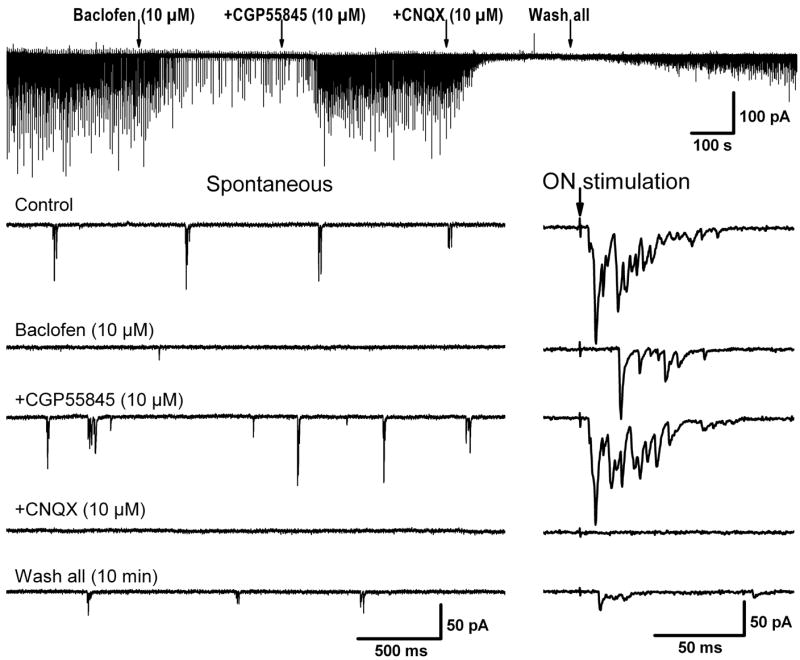FIG. 4.

Baclofen effects on spontaneous and evoked bursts of excitatory postsynaptic currents (EPSCs) in periglomerular (PG) cells. All traces were obtained from the same PG cell recorded in voltage clamp at HP = −60 mV. Baclofen blocked almost completely the spontaneous bursts of EPSCs and the olfactory nerve–evoked bursts of EPSCs were either eliminated (failure, not shown) or reduced in amplitude. Baclofen also increased the latency of the EPSC bursts. These effects were reversed after addition of the GABAB-R blocker CGP55845 to the bath. The spontaneous and evoked EPSCs were blocked by the non–N-methyl-D-aspartate receptor blocker CNQX. A partial recovery of the EPSCs was obtained after washout of the drugs.
